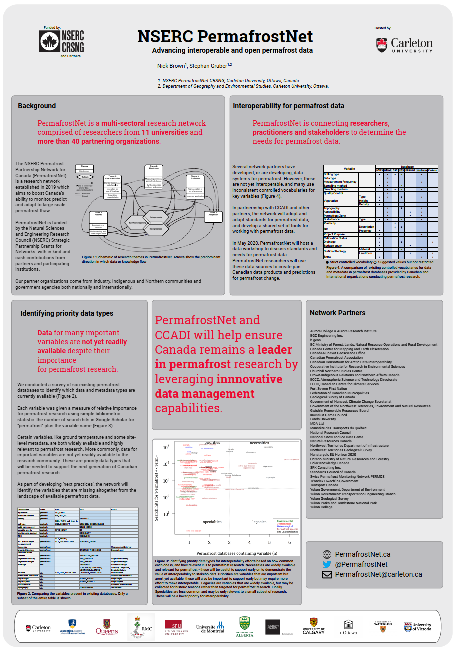A prototype field-to-publication data system for a multi-variable permafrost observation network.
Blog post by Nick Brown, NSERC PermafrostNet Data Scientist
Analysis and prediction of permafrost change are hampered by lack of observational data. In collaboration with Stephan Gruber, Peter Pulsifer, and Amos Hayes, we developed a permafrost data management system to support permafrost observation networks that involve many different kinds of permafrost data.
We identify five broad challenges for permafrost data management and publication: (1) existing data management strategies do not scale well, (2) data users have different skills and needs, (3) permafrost data are varied, (4) resources for permafrost data management are limited, and (5) existing permafrost data sources are difficult to integrate. Our prototype system supports a permafrost data workflow from observation to the distribution of interoperable data. The system simplifies data publication and management, although we identify and discuss several hurdles in adapting the CF conventions and ERDDAP for permafrost data. Our learning can inform organizations who collect, manage, or distribute permafrost data or those who manage large observation networks.
In summary:
- Five broad challenges limit permafrost data management and publication.
- We frame these challenges as requirements, and identify similarities with the FAIR principles.
- We developed a prototype a permafrost data system to support field-to-publication workflows.
- In this project, we use an “adopt and adapt” approach for standards and software.
- Our data system supports more FAIR permafrost data.
This research was enabled in part by support provided by Compute Ontario et du Digital Research Alliance of Canada.












